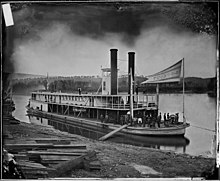Significant Supreme Court Cases - Golden Oldies
_______________________________________________________________
 Marbury v Madison (1803) Judicial Review Marbury v Madison (1803) Judicial Review
 McCulloch v Maryland (1819) States can't tax the Federal Government McCulloch v Maryland (1819) States can't tax the Federal Government
 Gibbons v Ogden (1824) Interstate Commerce Gibbons v Ogden (1824) Interstate Commerce
Meyers v U.S. (1926) The President's power to fire members of his cabinet
Chisholm v Georgia (1793) Can a person from one state sue another? Yes but no, because the 11th Amendment clarified the question.
Baker v Carr (1962) The Judicial Branches power to get involved in state re-districting
 Kelo v New London CT (2005) - Eminent Domain Kelo v New London CT (2005) - Eminent Domain
________________________________________________________________________
Day 1 (February 23)
AIM Explain the Constitutional issues relating to judicial review behind the case Marbury v Madison (1803)
AGENDA
1. EdPuzzle video - Marbury v. Madison (1803)
2. Marbury v Madison - Judicial Review - Assignment in Schoology
ASSESSMENT I can explain how the case Marbury v Madison extended the power of the Supreme Court to declare unconstitutional a law (judicial review).
_______________________________________________________________
Day 2 (February 25)
AIM Illustrate Supreme Court interpretation of Amendment 10 (State Reserved Powers), Article VI (The Supremacy Clause), and Article I, Section 8 (Congress’s necessary and proper or “elastic” clause) by presenting in Legal Brief format the 1819 Supreme Court Case, McCulloch v. Maryland.
AGENDA
1. EdPuzzle video - McCulloch v. Maryland (1819)
2. McCulloch v Maryland (1819) - states can't tax the federal government assignment in Schoology.
ASSESSMENT - I can explain how Article 1, Section 8, Article 6 and Amendment 10 were interpreted to mean that the necessary and proper clause gave the federal government authority to establish a bank and it has superiority of state banks.
_______________________________________________________________
Day 3 (March 2)
AIM Explain how Article 1, Section 8, Clause 3 "The Commerce Clause" plays a key role in the Supreme Court decision defining a state’s ability to regulate interstate commerce with its decision Gibbons v Ogden (1824)
AGENDA
1. EdPuzzle video - Gibbons v Ogden (1824)
2. Gibbons v Ogden (1824) assignment in Schoology
ASSESSMENT - I can explain Article 1, Section 8, Clause 3 of the Constitution. I can explain the relationship between states and commerce by citing a legal brief on Gibbons v Ogden (1824)
______________________________________________________________
Day 4 (March 4)
AIM - Explain how the United States Supreme Court, using Article II, Section II, "advise and consent" clause. expanded presidential power in firing unelected employees of the executive branches with the Supreme Court ruling, Meyers v US (1926)
AGENDA
1. Meyers v US (1926) assignment in Schoology
ASSESSMENT - I can explain Article II, Section 2 of the Constitution. I can explain how the Supreme Court case, Meyers (1926) v US granted the presidency more power in firing a member of his cabinet.
_______________________________________________________________
WEEK 2 - Significant Court Cases
Day 5 (March 9)
AIM - Explain how the United States Supreme Court gave power to individuals to sue a state Chisholm v Georgia (1793), (Article 3, Section 2 describing the jurisdiction of the courts), and how that power was checked when the states ratified the 11th Amendment.
AGENDA
1. Quiz - Gibbons v Ogden - in Schoology
2. Quiz - Meyers v US - in Schoology
ASSESSMENT - I can explain Article III, Section 2 of the Constitution. I can explain how the Supreme Court case, Chisholm v Georgia granted powers to sue the state and identify what Constitutional Amendment limited the power to sue the state.
_______________________________________________________________
Day 6 (March 11)
AIM - Explain how the United States Supreme Court case, Baker v. Carr (1962) using the 14th Amendment Equal Protection clause, gave the courts the power to redistrict voting districts under "non-political," "justiciable" circumstances.
AGENDA
1. EdPuzzle video - Baker v Carr (1962)
2. Assignment - Baker v Carr (1962) in Schoology
ASSESSMENT - I can explain how the Supreme Court case, Baker v Carr (1962) expanded the power of the Supreme Court.
_______________________________________________________________
Day 7 (March 16)
AIM - Explain how the United States Supreme Court case, Kelo v New London (2005) expanded the definition al "eminent domain" to including economic development.
AGENDA
1. EdPuzzle video - Kelo v New London (2005)
2. Assignment - Kelo v New London (2005) in Schoology
ASSESSMENT - I can explain how the Supreme Court case, Kelo v New London (2005) used the 5th Amendment to interpret eminent domain and public use to include economic development
_______________________________________________________________
Day 8 (March 18)
AIM - Explain the historical and constitutional significance of Supreme Court Cases including Baker v Carr (1962) Kelo v New London (2005), Gibbons v Ogden (1824) Meyers v US (1926), Chisholm v. Georgia (1793), Marbury v Madison (1803), McCulloch v Maryland (1819)
AGENDA
1. LIVE TEAMS at 12:30 - review
2. Study guide to prep for test in Schoology
ASSESSMENT - I can explain the historical and Constitutional significance of key Supreme Court decisions.
_______________________________________________________________
Day 9 (March 18)
AIM - Explain the historical and constitutional significance of Supreme Court Cases including Baker v Carr (1962) Kelo v New London (2005), Gibbons v Ogden (1824) Neyers v US (1926), Chisholm v. Georgia (1793), Marbury v Madison (1803), McCulloch v Maryland (1819)
AGENDA
1. TEST - Historically significant Supreme Court Cases
ASSESSMENT - I can explain the historical and Constitutional significance of key Supreme Court decisions.
_______________________________________________________________
Ohio Learning Standards
Basic Principles of the U.S. Constitution
Content Statement 7 - Constitutional government in the United States has changed over time as a result of amendments to the U.S. Constitution, Supreme Court decisions, legislation and informal practices.

|
|